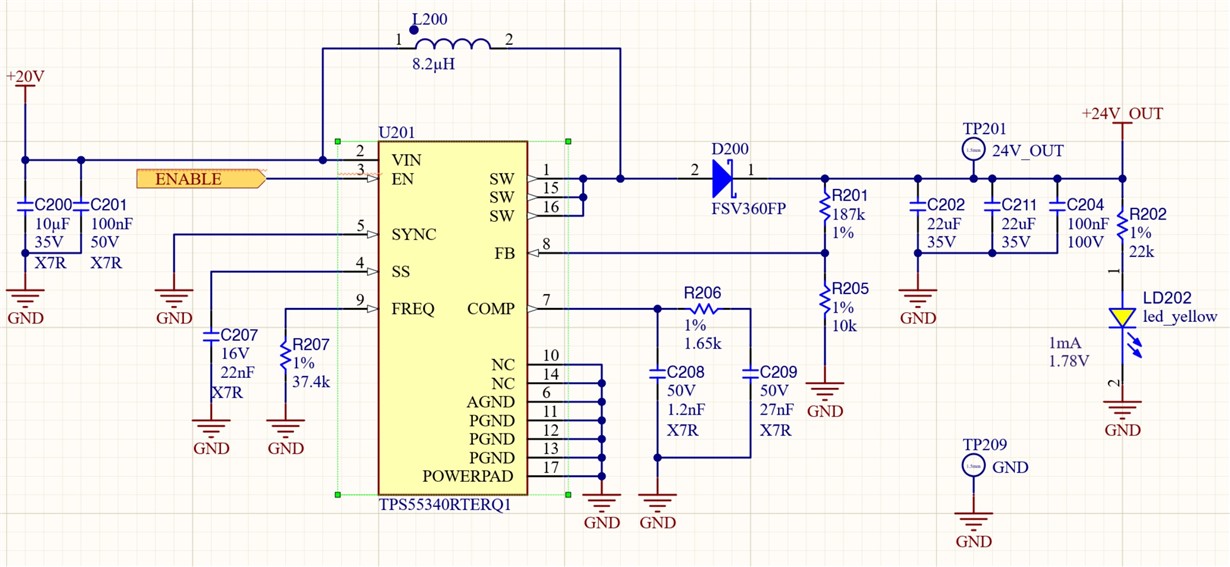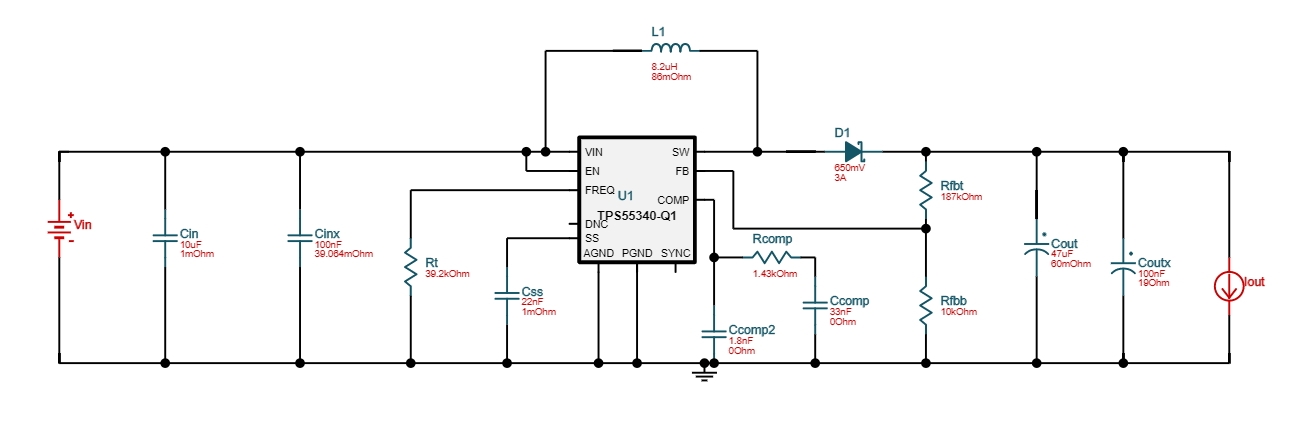Hello,
I am having the following issue with your TPS55340 device (designed for a 24V output @1A output)
- 20V (constant) applied to VIN (VBAT pin) and no load connected to output (apart from LED).
- 20V applied to ENABLE pin ()
- Instantly +20V and GND become shorted (even with a very small current limit in place)
- Removing regulator from PCB removes short
I have performed the following checks:
- Circuit simulated on Webench
- Fitted BOM confirmed with Webench
- PCB checked for shorts/damage/soldering quality
- Tried on a second PCBA
Do you have any idea what else could be checked? Thanks in advance.





